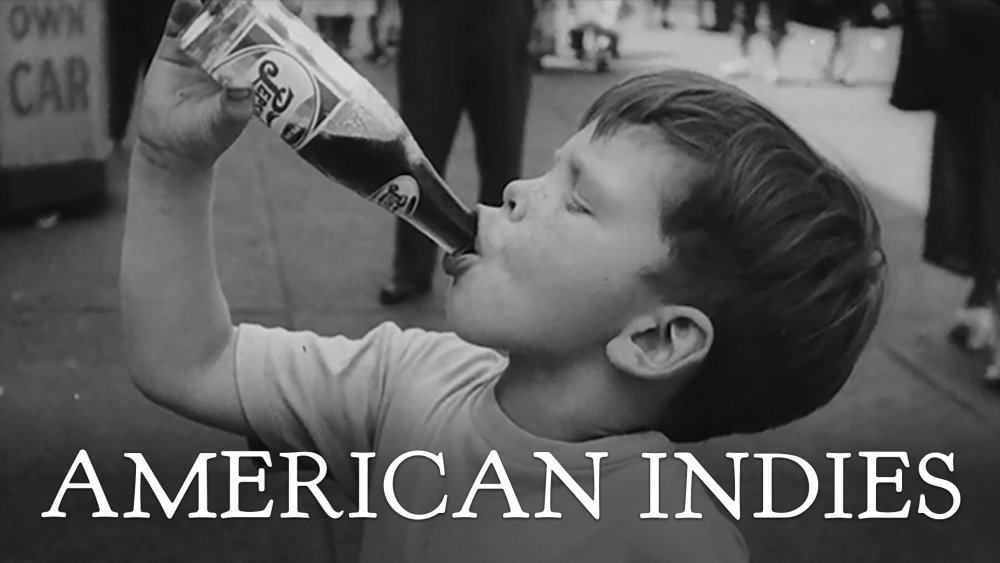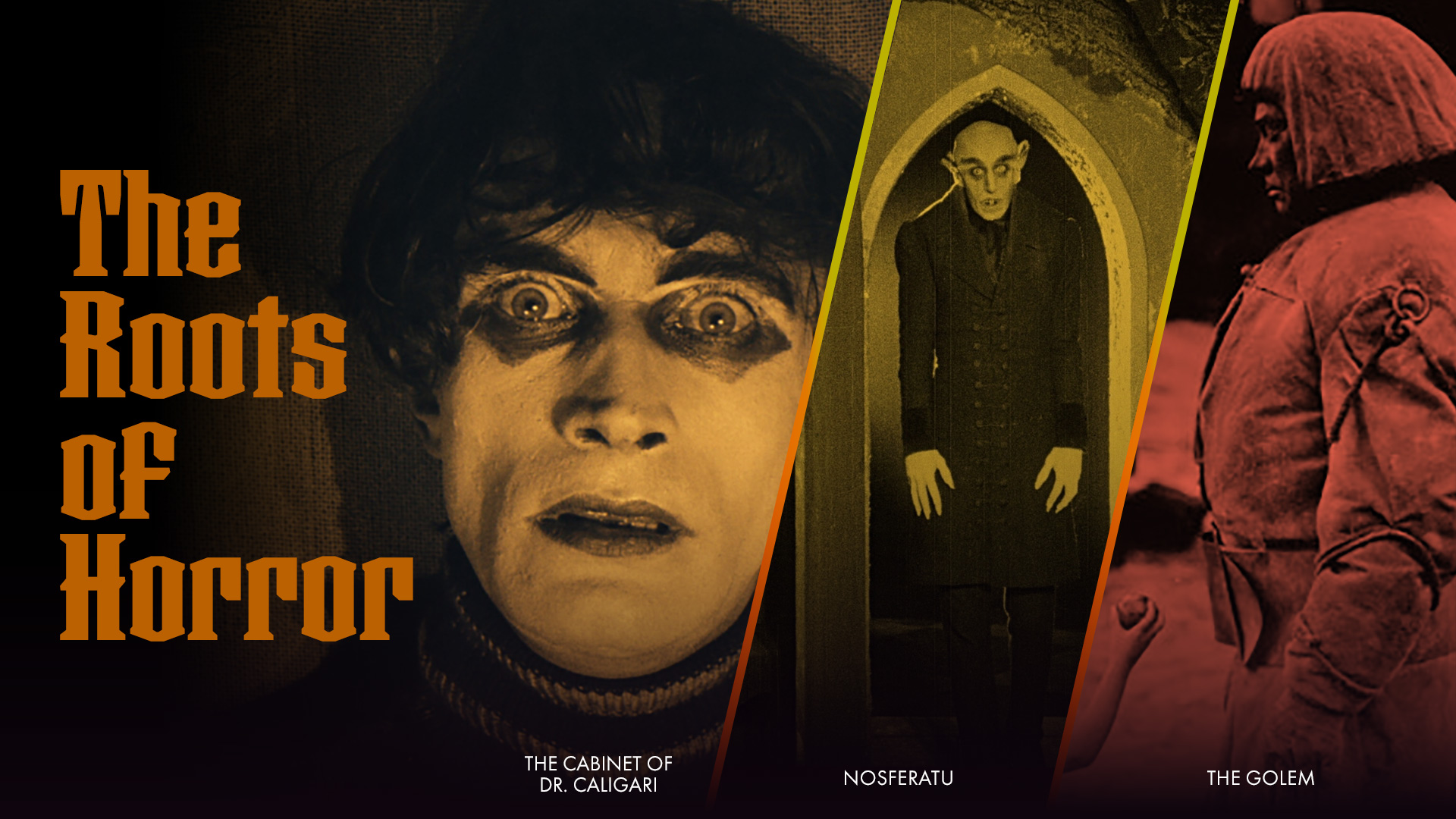
The Roots of Horror: 6 Groundbreaking Silent Films That Influenced the Genre

Over the years, the horror genre has constnatly evolved, with each decade propelling it forward and giving birth to countless subgenres along the way. In the 1950s, sociopolitical anxieties led to the emergence of sci-fi horror hybrids. In the 1960s and ‘70s, European auteurs like Dario Argento set a new bar for visual storytelling with elaborate set design, stylish lighting, and experimental camera techniques. With the advent of digital technology, contemporary horror films can make even the most unthinkable nightmares come to life with CGI and advanced special effects. But how has the genre grown and flourished so spectacularly? That can be traced all the way back to its roots.
The horror genre would not be where it is today without the original films and directors who first dared to scare on screen. These were visionaries of German Expressionism and the silent film era. With minimal technology and no backlog of references or predecessors, these pioneers of the genre were able to create unforgettable images of terror and dread with very little in their bag of tricks. In the process, they shattered new ground, paving the way for the genre to take shape and evolve. Kino Film Collection is proud to highlight six groundbreaking silent films that helped spawn the horror genre.
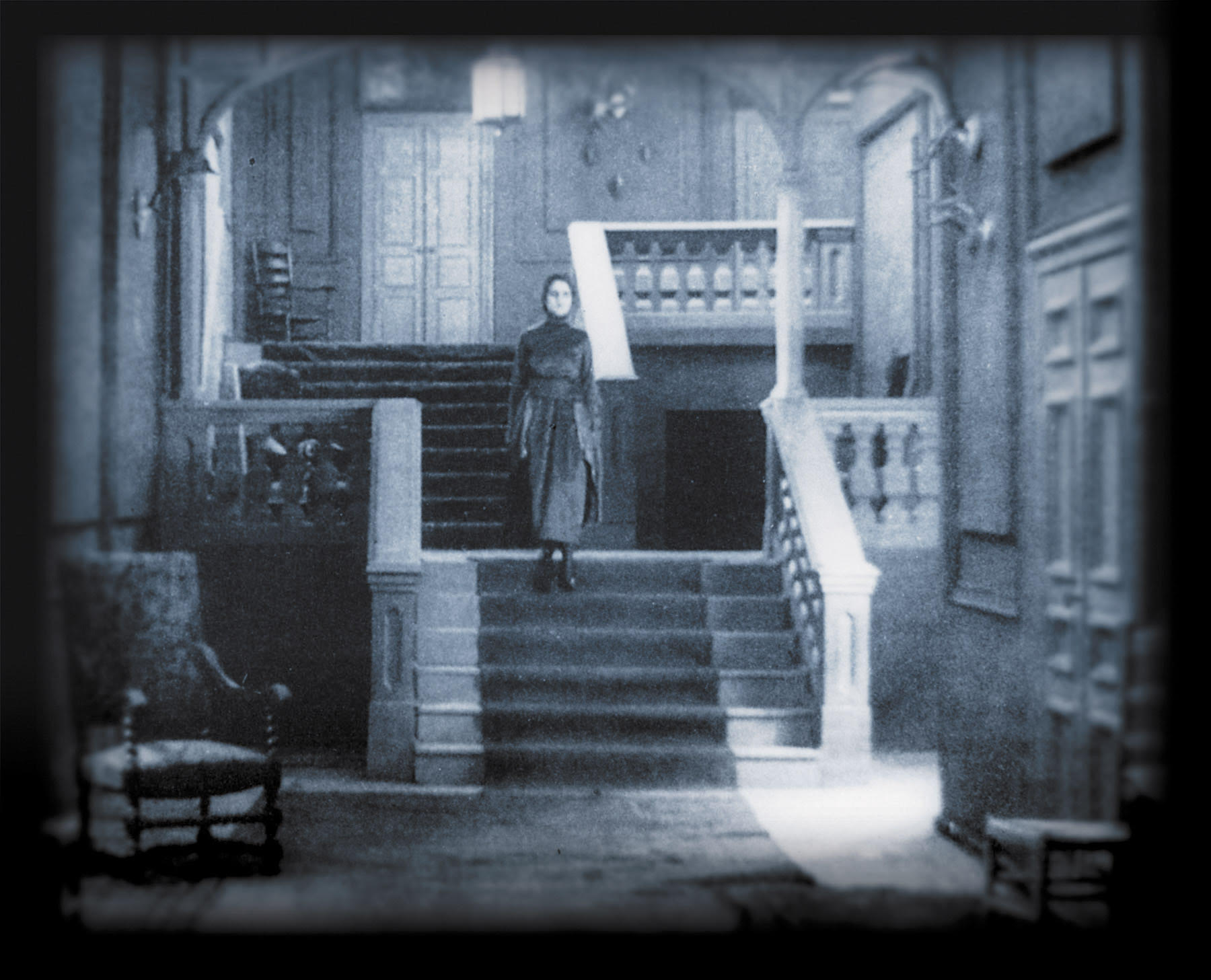
The Haunted Castle (1921)
Though the premise is a classic whodunnit murder mystery, F.W. Murnau’s The Haunted Castle is considered early horror for its moody setting, diabolical theme, and an overall sense of dread. A group of men meet for a hunt at Castle Vogelöd, but their party is interrupted by the arrival of a Count who is suspected to have murdered his brother. His arrival throws everyone into a frenzy over the mystery of his brother’s death, leading to the unburying of a dark secret. Murnau foregoes the supernatural in favor of the metaphorical ghosts, proving that the most terrifying hauntings are by one’s own past.

The Cabinet of Dr. Caligari (1920)
Widely considered to be the “first true horror film” (as Roger Ebert declared), The Cabinet of Dr. Caligari was a trailblazer for the genre in many ways. Using twisted, sharply angled landscapes, distorted sets reminiscent of a haunted fun house, aggressive shadows, and even a malevolent-looking font for the intertitles, Robert Wiene’s film established some early tropes that would later appear in countless films. The story follows an evil hypnotist and carnival performer who forces a sleepwalker who’s under his control to kill people, and is one of the earliest films to feature the unreliable narrator device. Aside from being the first true horror, the film is also considered to be the quintessential example of German Expressionism, an early 20th century art movement that emphasized the artist’s inner feelings rather than reality. Rarely does a film carry as much historical significance as The Cabinet of Dr. Caligari…
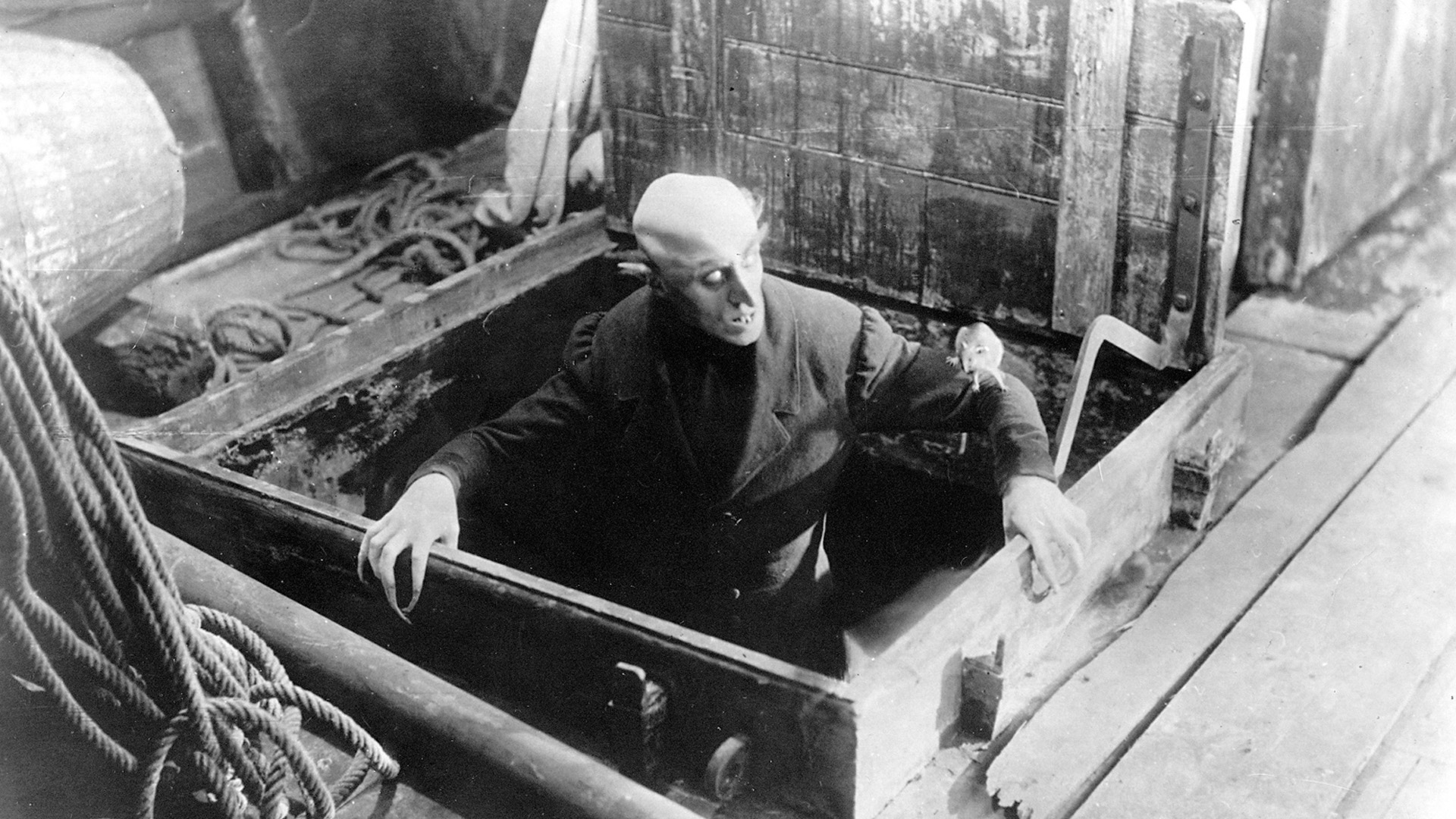
Nosferatu (1922)
…unless we’re talking about Nosferatu. This film changed everything. It was the first film that truly got under viewers’ skin, that paralyzed audiences with fear, that haunted people’s dreams. Nosferatu set a new standard for horror, as not only a genre of film but a psychological feat. The audience should feel something, while watching and long after. Director F.W. Murnau achieves this with his liberal use of shadows, shrouding his titular character in darkness to evoke the sense that evil lurks all around, various special effects that were groundbreaking for its time, and of course with the appearance of Count Orlok himself. His looming stature, pointy ears, menacing eyes, talon-like fingers, and razor-sharp teeth combined to create one of the most notorious and unforgettable monsters in film history. Though Nosferatu was an unauthorized adaptation of Bram Stoker’s Dracula, Murnau’s film stands up as a singular masterpiece that set the stage for the horror genre. Get to know the original ahead of this year's much-anticipated remake by Robert Eggers.
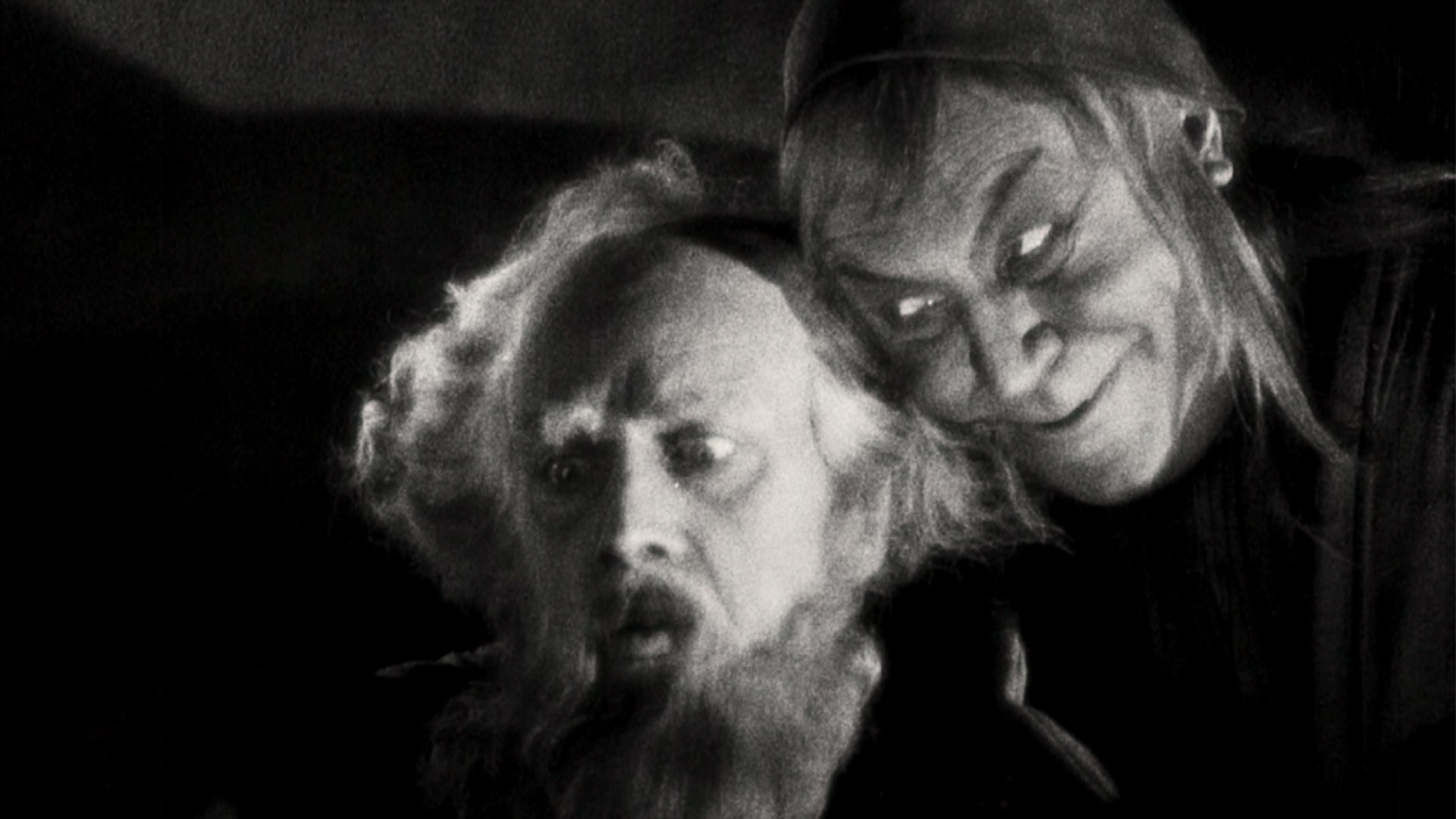
Faust (1926)
Another Murnau classic, Faust wastes no time in drawing viewers into its nightmarish world. The film opens with what appears to be the Four Horsemen of the Apocalypse riding on skeleton horses (undoubtedly an influence for Tim Burton 60 years later) and a face-off between the black-winged demon Mephisto and an all-white Archangel. Mephisto wagers a bet that he can “wrest Faust’s soul from God,” corrupting the righteous and well-intentioned man with sinful temptations. If he succeeds, the Earth is his to control. Based on a 15th-century German legend, Faust is a classic tale of good vs. evil, and Murnau complements the monumental story with equally epic visuals. The image of Mephisto alone, with his massive black wings, glowing eyes, and domineering size, which Murnau cleverly exaggerated by having him tower over a miniature model of a village, is enough to chill your spine.

Destiny (1921)
Rounding out our collection of silent horror classics is Fritz Lang’s Destiny. Like Faust’s good vs. evil theme, Destiny explores an age-old question: can love conquer death? The film follows a young woman who loses her fiancé to Death’s calling. Grief-stricken, she pleads with Death to return him to her and the two strike a deal. Death will throw her into three romantic tragedies in which she and her fiancé are alternate versions of themselves. If she can prevent his death in any of the three scenarios, Death will resurrect her lover. Though the premise surrounding mortality and the haunting appearance of Death with his weathered face and appropriately lifeless eyes place this film squarely in the horror category, the story is peppered with humor, mysticism, and even romance. The ending in particular showcases what it means to love someone, proving that while love may be stronger than death, in the end death still wins.
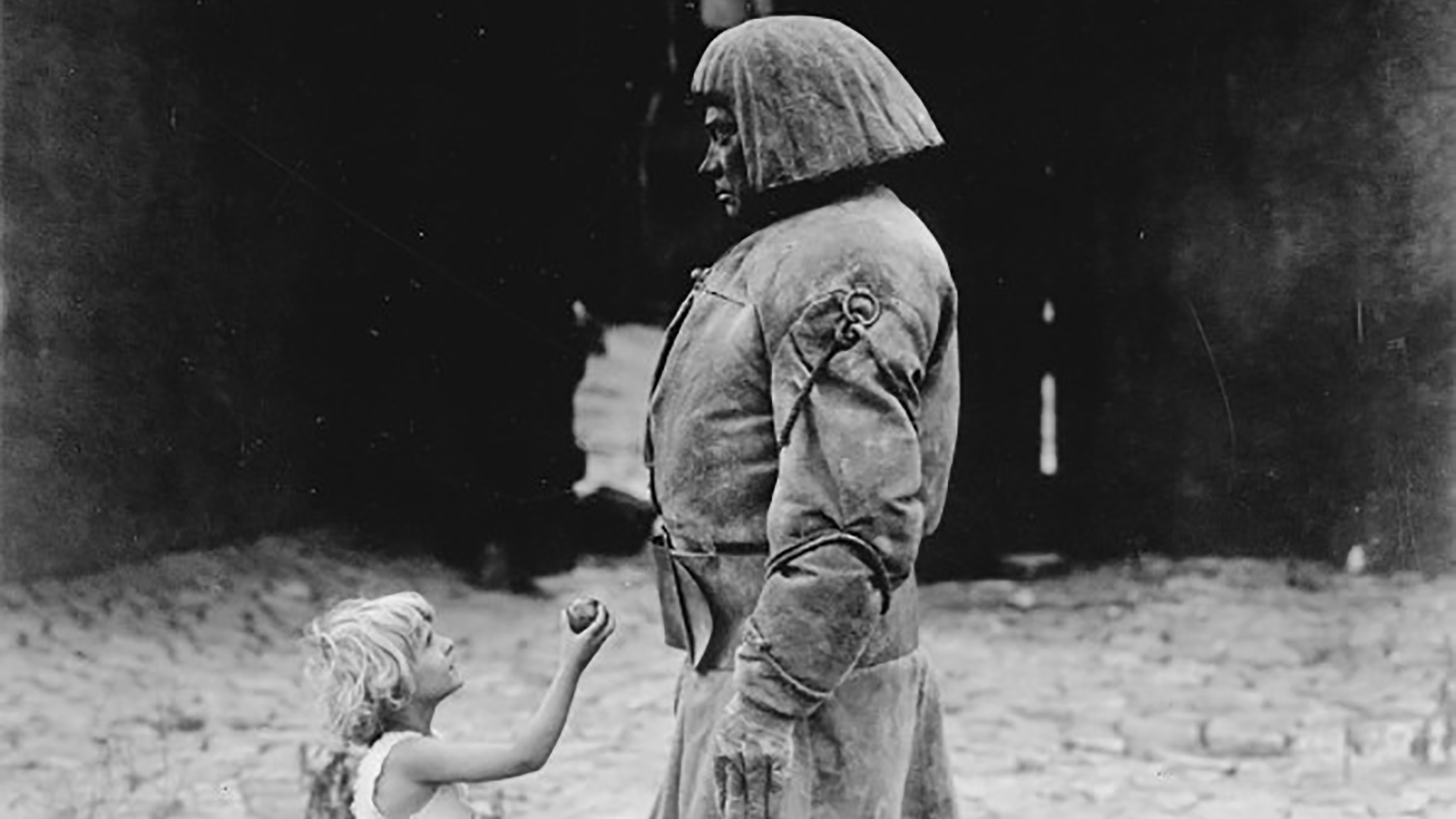
The Golem: How He Came Into the World (1920)
In Jewish folklore, a golem is a creature formed out of inanimate materials like dirt or clay through ritual incantations with the aim to help or protect vulnerable Jewish communities. But oftentimes, the golem is corrupted by worldly sins and becomes a threat to the community it’s meant to protect. Paul Wegener’s film, The Golem: How He Came Into the World, is based on the most famous golem legend and follows this exact premise. Set in the Jewish ghetto of medieval Prague, the film follows Rabbi Loew, who creates a golem out of clay to protect his people from a tyrannical emperor. But when his assistant starts using the golem for selfish means, the creature transforms into a monster bent on destruction. Co-written by Wegener and Henrik Galeen, who penned Nosferatu, The Golem: How He Came Into the World is actually the third in a trilogy by Wegener, but sadly, the first two films have been lost. The Golem was also a direct influence for the 1931 film adaptation of Mary Shelley’s Frankenstein.
COMING OCTOBER 24








